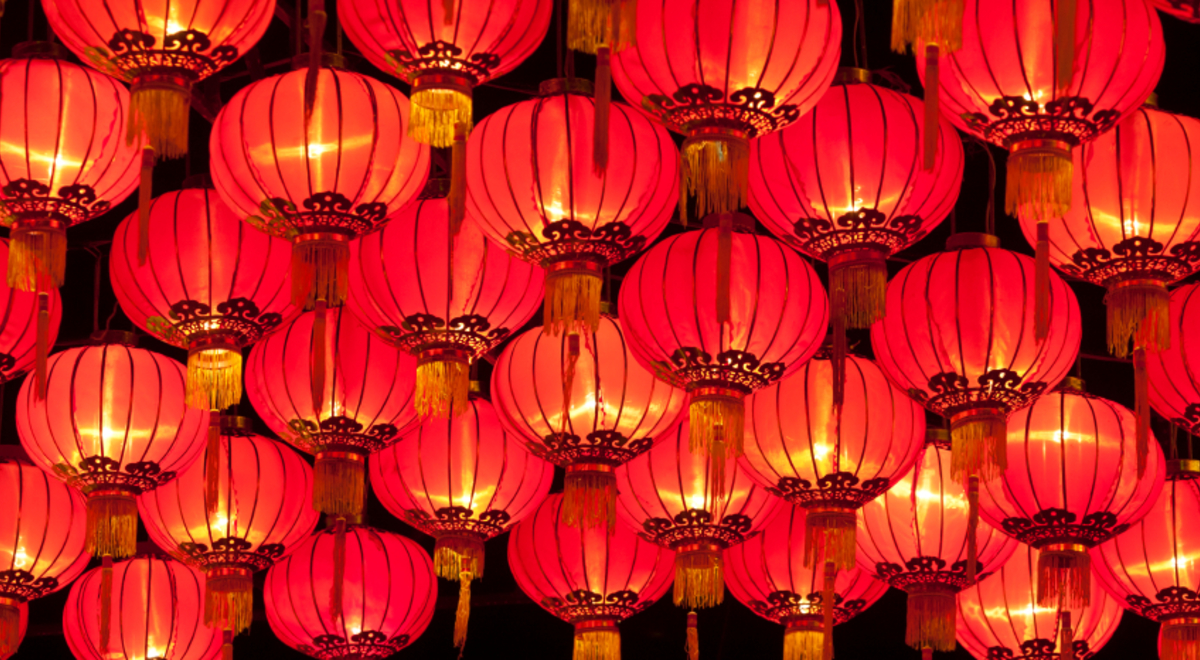Hong Kong turns red, red, red.
Red: when the stationery shops start to stock up with red decorations and envelopes of all sizes.
Red: when department stores start to advertise their range of red lingerie and underwear.
Red: when shopping malls arrange spectacular displays of flowers, lantern and lights.
And you know it will soon be time for Chinese New Year celebrations.
 Red: Chinese Lanterns
Red: Chinese Lanterns
Also known in English as the Spring Festival or Lunar New Year, this important traditional holiday is celebrated at the turn of the Chinese calendar and is without doubt the biggest festival of the lunar calendar. With fifteen days of age-old traditions, family gatherings and cultural celebrations, it’s a holiday that anyone can appreciate and enjoy.
Many myths, legends and traditions surround Chinese New Year. In cities around the world, from China to Mauritius and anywhere there is a significant Chinese population, the festival is celebrated differently. But in general, the holiday is a time for families to come together and honour their ancestors. There is usually a large reunion feast comprised of traditional dishes of fish, meat and vegetables (www.geni.com). Each dish represents, in some way, good fortune for the coming year.
Tangerines and oranges are another symbol of good luck and fortune and potted plants bearing these fruits can be seen at the entrances of office buildings, shopping centres and apartment blocks leading up to the New Year. On the streets, people can be seen burning paper money and other valuable fake items to honour their ancestors. This offering of “ghost money” and other items is believed to be transferred to the afterlife.
As mentioned above, however, red is a most significant colour in the celebrations. It is believed that the colour can ward off evil spirits and bring luck to those who wear it. One of the most well-known traditions is the gifting of “lai see”. These red or gold envelopes of ‘lucky’ money are bestowed from "big to small", "old to young", and "senior to junior". For children, it is perhaps their favourite part of the holiday. Ask school kids in Hong Kong about their Chinese New Year experience and the first two words you’ll hear are, “red packets” or “money, money”.
Regardless of whether you’re watching the spectacular fireworks display at Victoria Harbour or squeezing yourself into the crowds at one of the many flower fairs, Chinese New Year is a very special time of the year. Whether you’re betting on the horse races or joining in the party at the world-famous Night Parade of floats and performing artists, Lunar New Year in Hong Kong will be one for the books.
Sources:
https://www.geni.com/blog/chinese-new-year-a-celebration-of-tradition-an...
https://www.facts-about-hong-kong.com/Hong-Kong-Chinese-New-Year-Tour.html
https://blogs.wsj.com/chinarealtime/2014/01/27/map-visualizes-chinese-ne...
https://www.geni.com/blog/chinese-new-year-a-celebration-of-tradition-an...







